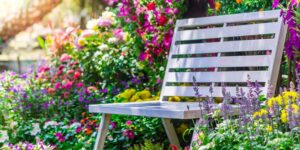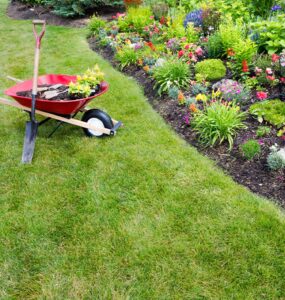
Gardening with Native Grasses
By: Rob Sproule
Grasses, Grasses, Everywhere
The Benefits of Grasses
Best Varieties for Alberta
“The moment one gives close attention to anything, even a blade of grass, it becomes a mysterious, awesome, indescribably magnificent world in itself.”
– Henry Miller
Grasses, Grasses, Everywhere:
Have you noticed that grasses are everywhere? Drive down down any boulevard or past any restaurant build in the past few years and you’re likely to see proud walls of “˜Karl Forester’ grass swaying in the wind. 10 years ago, I noticed the trend of landscaping with large beds of grass in Europe. It’s found its way across the pond, and Albertans have embraced it as a modern and environmentally sustainable salute to our roots. You’d think that, being on the Prairies, we’d have had enough of grass. But the opposite is true. Grass is written into our cultural history. Whether it’s memories of prairie meadows or the soothing rhythm as it sways, it soothes us.
Let’s get down to the nitty gritty:
“¢ Plant them in the full sun
“¢ Make sure they have drainage (don’t plant in mud or a wet depression)
“¢ Most varieties are drought tolerant, so easy on the water
“¢ Divide every 3-5 years, or when it gets too big for you. Simple dig up the roots and pull carefully apart.
The Benefits of Grasses:
Let’s list the “cons” first, because they’re short. They don’t bloom. Now for the “pros”:
“¢ They’re hardy like spruce trees, with many of them being native species. You don’t need to winterize and barely need to water.
“¢ They get shaggy at the base. How is this a pro? Beneficial ground beetles, ladybugs, and spiders will set up camp and patrol your yard for pests.
“¢ Whether spiky blue Festuca clusters or feather-reed grasses elegantly swaying, they’re gorgeous.
“¢ They provide winter appeal highlighted against the snow. In the early spring, opportunistic birds will shear them down for nesting material.
“¢ Plant them and forget about them. They’re that easy to take care of.
“¢ Some varieties produce striking seed heads, which you can cut for crafts or cuts or leave for the birds to eat.
“¢ Bring a sense of movement to your yard that few plants can
“¢ You don’t need pesticides chemicals.
A word about the last point. Natives and prairie plants will often have a few pests on them. That’s good; they’re food for your predators. As long as you don’t spray pesticides (ie. wipe out your predators so the pests can rebound faster), you should see an equilibrium emerge.
Learn more about native grasses with Alberta’s Best Gardening Blog
Best Varieties for Alberta:
“˜Karl Foerster’ Grass (Feather Reed): this is vertical and magnificent. You know them well, having seem them swaying in large plantings alongside roads and in commercial landscaping. It’s hardy but won’t self seed (sterile seeds), and grows to 5′ or more in full sun. It yields feathery, reed-like blossoms in summer.
Blue Fescue: this compact, clumping grass only hits a foot tall but does so in cool blue style. Needs almost no maintenance and is perfect to break up the green leaves in the perennial bed. The birds love to harvest it for bedding in early spring, giving it a perfect prune.
Variegated Reed Grass: Smaller than its cousin (“˜Karl Foerster’), this Reed grass brings the sense of movement and grace. It’s a cool season lover, and will thrive in our crisp springs and falls. It tops out at 2-3′ feet high and brings a touch of variation to perennials beds, which are often otherwise green when not in bloom.















